<< Previous | Displaying results 4851-4875 of 6769 for "" | Next >>
A scene staged by the Nazis for the International Red Cross inspection of the Theresienstadt ghetto. The people are probably watching a soccer match. Czechoslovakia, June 23, 1944.
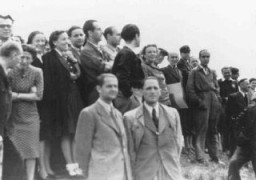
A scene staged by the Nazis for an International Red Cross inspection of the Theresienstadt ghetto. Czechoslovakia, June 23, 1944.
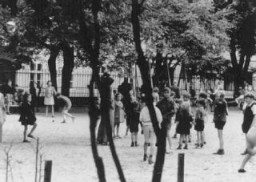
Photograph of a Jewish policeman taken during an International Red Cross visit to the Theresienstadt ghetto. The SS deceived the delegation into believing that the ghetto was a self-administered Jewish settlement. Czechoslovakia, June 23, 1944.
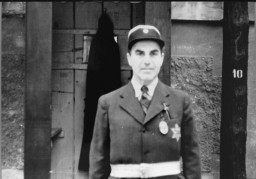
In a scene from a Nazi propaganda film, Dr. Paul Eppstein (right), Council of Elders chairman, addresses Dutch Jews. Theresienstadt ghetto, Czechoslovakia, August 1944.
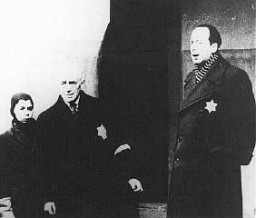
A Jewish girl, one of the "Tehran Children" (about 1,000 Polish Jewish refugee children who reached Palestine), upon arrival at the Atlit train station. Palestine, February 18, 1943.
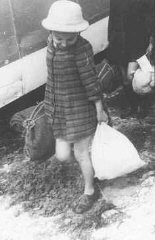
A group of Polish Jewish refugee children (known as the "Tehran Children") arrives in Palestine via Iran. Atlit reception camp, Palestine, February 18, 1943.
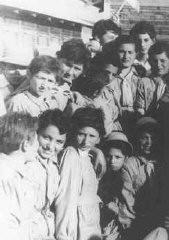
A group of Polish Jewish refugee children known as the "Tehran Children" after their arrival in Palestine. Atlit, Palestine, February 18, 1943.
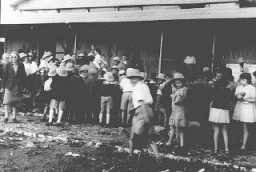
A group of Polish Jewish refugee children, known as the "Tehran Children," arrives in Palestine via Iran. Atlit reception camp, Palestine, February 18, 1943.

Henrietta Szold (left, in hat), founder of the Hadassah Women's Zionist Organization, welcomes some of the Polish Jewish refugee children known as the Tehran Children, upon their arrival in Palestine. Atlit, Palestine, February 18, 1943.
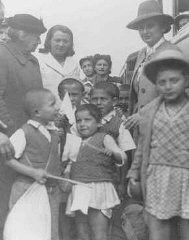
A nurse helps one of the "Tehran Children," Polish Jewish refugees, disembark from a train at the Atlit refugee camp. Atlit, Palestine, February 18, 1943.
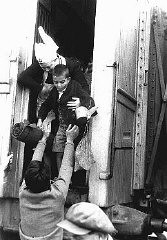
Some of the "Tehran Children," Polish Jewish refugees, study Hebrew in a Jewish National Fund youth village near Jerusalem. Palestine, March 9, 1943.
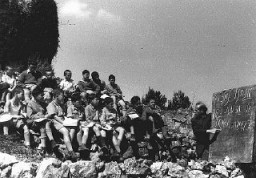
A group of Polish Jewish children (known as the "Tehran Children"), who arrived in Palestine via Iran, at the Mikveh Israel agricultural village. Palestine, February or March 1943.
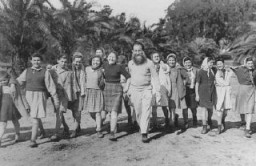
Polish Jewish refugee youth known as the "Tehran Children," who arrived in Palestine via Iran, learn agricultural skills. Ayanot, Palestine, 1943.
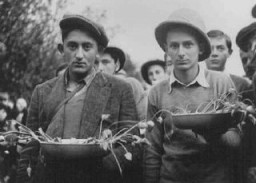
Polish Jewish refugee children known as the "Tehran Children" gather at a memorial stone dedicated to the Jewish refugees who died when the Patria (a ship bound for Palestine) sank in November 1940. Atlit, Palestine, 1943.
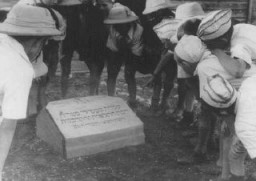
Eliahu Dobkin of the Jewish Agency (left) and Henrietta Szold, founder of the Hadassah Women's Zionist Organization (second from left), await the arrival of the "Tehran Children." Atlit, Palestine, February 18, 1943.
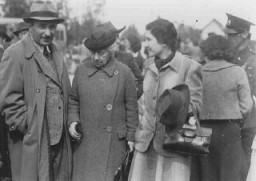
Shortly after liberation, an emaciated concentration camp inmate stands between two members of the International Red Cross. Theresienstadt, Czechoslovakia, May 1945.
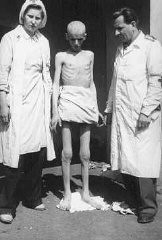
Jewish children sheltered by the Protestant population of the village of Le Chambon-sur-Lignon. France, 1941.

Page from the diary of Peter Feigl, a Jewish child hidden in the Protestant village of Le Chambon-sur-Lignon. The photos show his parents, who perished in a concentration camp. The text is in French and German. Le Chambon-sur-Lignon, France, 1942-1943.
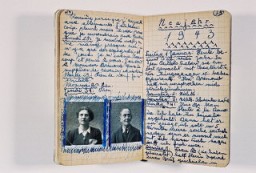
Photo of Peter Feigl, a Jewish child hidden in the Protestant village Le Chambon-sur-Lignon. Le Chambon, France, August 9, 1943.
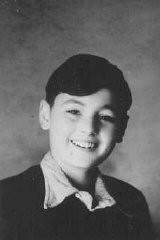
View of Le Chambon, where most of the village's Protestant population hid Jews from the Nazis. Le Chambon-sur-Lignon, France, date uncertain.
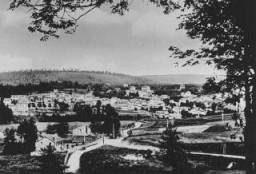
Postcard of a pension (a small hotel) in Le Chambon which served as a refugee home for children sheltered from the Nazis. Le Chambon-sur-Lignon, France, date uncertain.

Group of Jewish children who were sheltered in the children's home Maison des Roches, which was directed by Daniel Trocme (back, center, with glasses). Le Chambon-sur-Lignon, France, between 1941 and 1943.
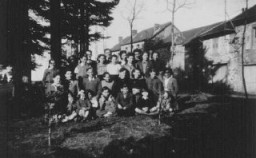
Portrait of Asael Bielski, a founder of the Bielski brothers' Jewish partisan unit in Naliboki forest. He was killed on the Soviet front in 1944. Novogrudok, Poland, before 1941.
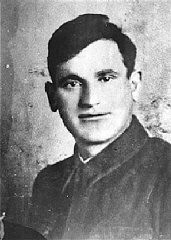
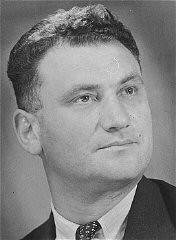
Postwar portrait of Alexander Bielski, a founding member of the Bielski partisan group. 1945–48.

We would like to thank Crown Family Philanthropies, Abe and Ida Cooper Foundation, the Claims Conference, EVZ, and BMF for supporting the ongoing work to create content and resources for the Holocaust Encyclopedia. View the list of donor acknowledgement.